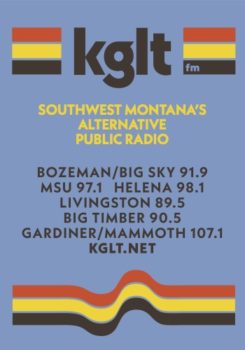“Livingston and Park County: The Early Years”—
Final People and Place Webinar
The Yellowstone Gateway Museum’s final “People and Place” virtual speaker series is Wednesday, April 28, 7:00pm with Paul Shea, “Livingston and Park County: The Early Years.” Participants can register for any or all of the Zoom programs here: https://yellowstonegatewaymuseum.org/webinars-programs/people-place/. Programs are uploaded to museum’s YouTube channel after the live virtual event.
Paul Shea stated, “Researching early Park County history has all the hallmarks of western expansion: railroads, agriculture, and mining. In Park County we have the added benefit of being able to weave the development of Yellowstone National Park into the story, adding tourism and its economic benefits to our early history.”

Shea illustrates the area’s early history with historic photos from the museum’s collection, tracing the beginnings and the development of Park County. He explores the success story of Livingston and the county as a whole, which rose from a sleepy agricultural area that was once part of Gallatin County to a bustling railroad center and gateway to the world’s first national park. Livingston was built because of the Northern Pacific Railroad (NPR) and the location of its locomotive repair shops east of the mountains. The railroad was the largest employer in the county for many years, driving economic development that led to the separation of Park County from Gallatin County in 1887.
Shea served as director of the Yellowstone Gateway Museum from December 2009 to April 2020. Before his move to Livingston, he was the founding executive director of the Yellowstone Historic Center in West Yellowstone, a position he held from 1998 to 2008. Paul also oversaw the restoration of West Yellowstone’s historic railroad district. Shea has lived and worked in and around Yellowstone National Park since 1979 and is originally from Nevada. He resides in Livingston.
Visit Facebook, Instagram, and Twitter for program updates. •






